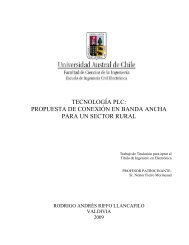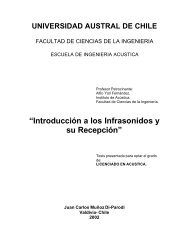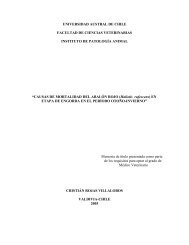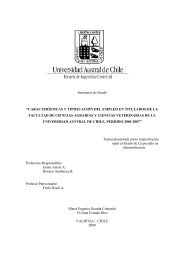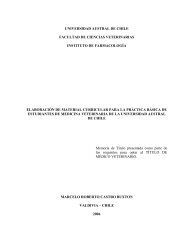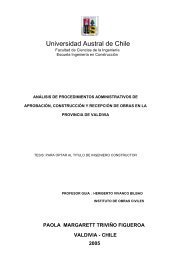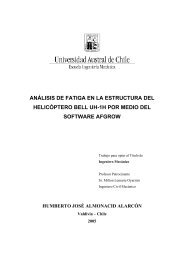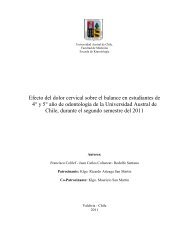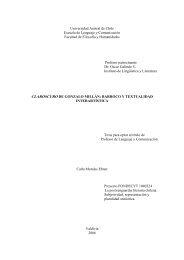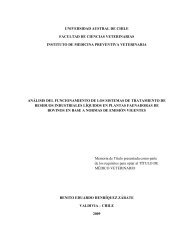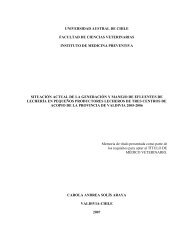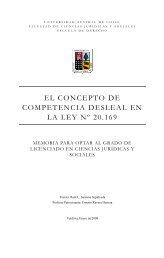Diversidad y control biológico de insectos - CyberTesis UACh ...
Diversidad y control biológico de insectos - CyberTesis UACh ...
Diversidad y control biológico de insectos - CyberTesis UACh ...
Create successful ePaper yourself
Turn your PDF publications into a flip-book with our unique Google optimized e-Paper software.
act as single locus (France et al., 1999). Therefore, both kinds of genes differ in their rates<br />
of evolution and mo<strong>de</strong>s of inheritance.<br />
The genetic structure arises from the interaction of several factors, some of which<br />
(mutations, genetic drift and, in some cases, selection) increase variation, while other like<br />
gene flow tend to homogenisation. This balance also can be influenced by species life<br />
traits, for example the fungus mating system. The species belonging to the Beauveria genus<br />
reproduce by two asexual spores: the yeast-like spores are produced into the host during the<br />
pathogenesis process, while conidia are produced over the host surface after the host <strong>de</strong>ath.<br />
Sexual reproduction is a very rare event and when it has been observed, the resulting fruit<br />
bodies have shown similarity with the genus Cordyceps, but some genetic material is<br />
exchanged by other ways such as the parasexual cylce, in which two compatible hyphae<br />
fuse temporally. In brief, the limited genetic exchange and dispersal capability of B.<br />
bassiana sensu lato allow supposing a strongly structured population.<br />
The growing importance of integrated pest management (IPM) and biological pest <strong>control</strong><br />
have triggered efforts to use native entomopathogenic organisms in Chile. In the late 1990s,<br />
the Entomopathogenic Organisms Collection arose from a nation-wi<strong>de</strong> prospecting and<br />
collecting effort, including nemato<strong>de</strong>s and fungi such as Metarhizium, Verticillium,<br />
Cordyceps and Beauveria spp. About 300 B. bassiana isolates were collected from<br />
agricultural and natural systems, different regions and hosts. Consequently, the potential of<br />
this entomopathogenic fungus is being evaluated and so far, up to 30 insect hosts have been<br />
i<strong>de</strong>ntified, most of them important pests of main Chilean crops, confirming the wi<strong>de</strong> host<br />
range of the species and the extreme variability between genotypes, at least what<br />
pathogenicity concerns. Nevertheless, pathogenic properties of genotypes are only partially<br />
characterized and other relevant ecological and genetic traits remain unknown.<br />
The Chilean Beauveria bassiana isolates were found in very contrasting environments and<br />
ecological conditions, from the <strong>de</strong>sertic areas through Mediterranean and temperate zones<br />
until Patagonia, including Eastern Island. Such wi<strong>de</strong> distribution of a clonal organism poses<br />
a interesting fact from both basic and applied ecology. In consequence, this study was<br />
conducted to <strong>de</strong>termine genetic diversity of B. bassiana accross its observed range in Chile<br />
19



